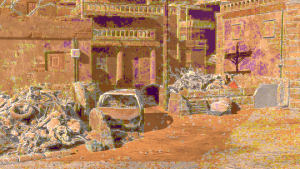DirectX 12 was recently updated with Variable-Rate Shading (VRS), giving developers the ability to improve performance by reducing the level of details in parts of a frame where you are unlikely to notice an impact on image quality. In August, UL Benchmarks added a VRS-specific test to 3DMark, utilising Tier-1 variable rate shading. This week, the benchmark is being updated again, adding in support for Tier-2 VRS.
If you aren't caught up on Variable-Rate Shading, here is a quick explanation for how it works:
The shading rate is the number of pixel shader operations called for each pixel. Higher shading rates are taxing on the GPU but create a more detailed image, while lower shading rates improve performance but lack in visual fidelity. Much like variable refresh rate on monitors, variable rate shading allows the rate to be dynamically adjusted based on GPU performance.
There are two tiers of VRS support in DirectX 12. With Tier 1, developers can specify a shading rate for each draw call. With Tier 2, there is more flexibility, allowing different shading rates within each draw call. In the updated 3DMark VRS benchmark, Tier 2 VRS is used to lower shading rates in areas where there is less contrast between neighbouring pixels. For instance, areas masked under shadow will have a lower shading rate compared to parts of the scene that are fully illuminated.
In the gallery above, you can see screenshots with Tier 2 VRS on, off and then the third image highlights the areas where different shading rates are applied. Purple highlights are areas with the lowest shading rate, followed by pink, orange, yellow and finally, white.
The Tier 2 VRS 3DMark benchmark is available in 3DMark Advanced Edition and Professional Edition. While the Tier 1 VRS test is compatible with either Nvidia Turing based GPUs and Intel Ice Lake processors, Tier 2 VRS is limited to Nvidia Turing GPUs. You also need to be running Windows 10 version 1903 or newer.
Discuss on our facebook page HERE.
KitGuru Says: Variable Rate Shading is very interesting tech with potential for big performance gains in PC games. Hopefully we'll have a chance to give this new benchmark update a few runs later in the month.
 KitGuru KitGuru.net – Tech News | Hardware News | Hardware Reviews | IOS | Mobile | Gaming | Graphics Cards
KitGuru KitGuru.net – Tech News | Hardware News | Hardware Reviews | IOS | Mobile | Gaming | Graphics Cards





